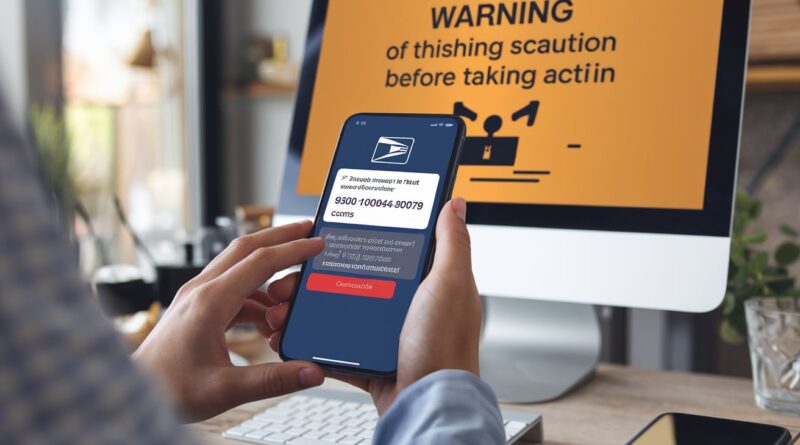The Hidden Threat Behind “93001109246000000113602978”
I recently received a text about my package, and it referenced tracking number 93001109246000000113602978. At first, I thought it was a routine update, but upon closer inspection, it seemed like a phishing scam. Thankfully, I knew better and avoided falling into the trap.
The tracking number 93001109246000000113602978 has been exploited in a widespread phishing scam targeting USPS customers. Scammers use this legitimate tracking number to trick people into providing personal and financial details. Recognizing these scams is crucial to protect yourself from identity theft.
We’ll take a closer look at how the tracking number 93001109246000000113602978 has been misused in phishing attempts. Understanding how scammers operate with these tracking numbers can help you avoid falling victim to similar schemes. Stay informed and learn how to protect your personal information effectively.
What Is “93001109246000000113602978”?
At first glance, “93001109246000000113602978” seems like an ordinary USPS tracking number. In fact, it is a legitimate tracking number that has been associated with actual package deliveries. However, it has been exploited by scammers in phishing schemes aimed at stealing personal and financial information. Scammers use numbers like this to lend credibility to their fraudulent messages and lure unsuspecting victims into a trap.
How Does the Scam Work?
The scam involving “93001109246000000113602978” is alarmingly simple yet highly effective. Here’s a breakdown of how it works:
Step 1: Fake Notification
Scammers send out emails, text messages, or even phone calls claiming to be from USPS. These messages inform the recipient that there is an issue with their package delivery, often referencing the tracking number 93001109246000000113602978.
Step 2: Call to Action
The notification typically includes an urgent request for the recipient to click on a link or call a phone number to resolve the supposed issue. For example, the message might say:
“Your package with tracking number 93001109246000000113602978 is on hold due to insufficient address information. Please click here to confirm your details.”
Step 3: Information Harvesting
Once the recipient clicks on the link or calls the number, they are directed to a fake website or prompted to provide sensitive information, such as:
- Full name
- Address
- Credit card details
- Social Security Number
Step 4: Exploitation
Scammers use this information for identity theft, unauthorized purchases, or even selling the data on the dark web.
Why Do Scammers Use “93001109246000000113602978”?
Scammers use the tracking number 93001109246000000113602978 because it makes their scam more believable. Here’s why this specific tracking number is so effective:
1. Legitimacy: Making the Scam Look Real
The number 93001109246000000113602978 is a real USPS tracking number. When scammers use a genuine tracking number, it tricks people into thinking the message is legitimate. This makes the scam more convincing and harder to spot.
2. Familiarity: People Trust Package Tracking Numbers
Most of us receive packages regularly, and we’re used to seeing tracking numbers. When a scam message contains a tracking number like 93001109246000000113602978, it feels familiar and trustworthy. This makes people more likely to open the message and take action, thinking it’s about a real delivery.
3. Broad Reach: Targeting People Who Recently Shipped or Received Packages
Since 93001109246000000113602978 has been used in actual deliveries, it can be sent to many people who are expecting or have recently received packages. This broadens the scam’s reach, making it more likely to trick someone into clicking a dangerous link or giving away personal information.
How to Spot a USPS Tracking Scam
Awareness is your first line of defense against scams like those involving 93001109246000000113602978. Here are some red flags to watch for:
1. Generic Greetings
Legitimate USPS notifications often include your name. Messages addressed as “Dear Customer” or “Valued Client” are likely scams.
2. Unsolicited Links
USPS does not typically send links asking for personal information. If you receive a link, verify its legitimacy by going directly to the official USPS website.
3. Urgency and Threats
Scammers thrive on panic. Phrases like “immediate action required” or “your package will be returned” are designed to pressure you into acting without thinking.
4. Mismatched Information
Cross-check the tracking number on the official USPS website. If the details don’t match your package, it’s a scam.
Steps to Protect Yourself
To safeguard yourself from scams involving tracking numbers like 93001109246000000113602978, follow these best practices:
1. Verify Before You Click
Always verify tracking numbers and delivery issues directly with USPS or the carrier in question.
2. Avoid Sharing Personal Information
Never provide personal or financial information through links or phone numbers sent via unsolicited messages.
3. Use USPS Tools
Leverage tools like “Informed Delivery” from USPS to track your packages securely.
4. Report Suspicious Activity
If you suspect a scam, report it to the USPS Inspection Service and forward phishing emails to spam@uspis.gov.
5. Enable Alerts
Most banks and credit card companies offer fraud alerts. Sign up for these services to receive notifications of suspicious activity.
FAQs About “93001109246000000113602978”
1. Is “93001109246000000113602978” a Real Tracking Number?
Yes, it is a legitimate USPS tracking number, but it has been misused in phishing scams.
2. How Do Scammers Obtain Tracking Numbers?
Scammers often obtain tracking numbers like 93001109246000000113602978 from intercepted communications, data breaches, or public forums where package details are shared. They may also recycle numbers from old or completed deliveries.
3. What Should I Do If I Receive a Scam Message?
If you receive a suspicious message referencing 93001109246000000113602978:
- Do not click on any links or provide information.
- Report the message to USPS at spam@uspis.gov.
- Block the sender to prevent further contact.
4. Can My Information Be Recovered After a Scam?
If you suspect your information has been stolen, take these immediate steps:
- Contact your bank or credit card provider to secure accounts.
- File a report with the Federal Trade Commission (FTC) at IdentityTheft.gov.
- Consider freezing your credit to prevent unauthorized access.
5. How Can I Safely Track My Packages?
Use official USPS tools or apps to track your packages. Always enter tracking numbers manually on the USPS website instead of following links from messages.
Conclusion
The tracking number 93001109246000000113602978 is a striking example of how scammers exploit trust and familiarity to commit fraud. By staying informed and vigilant, you can protect yourself from such schemes. Always verify the authenticity of notifications and prioritize your online security.

